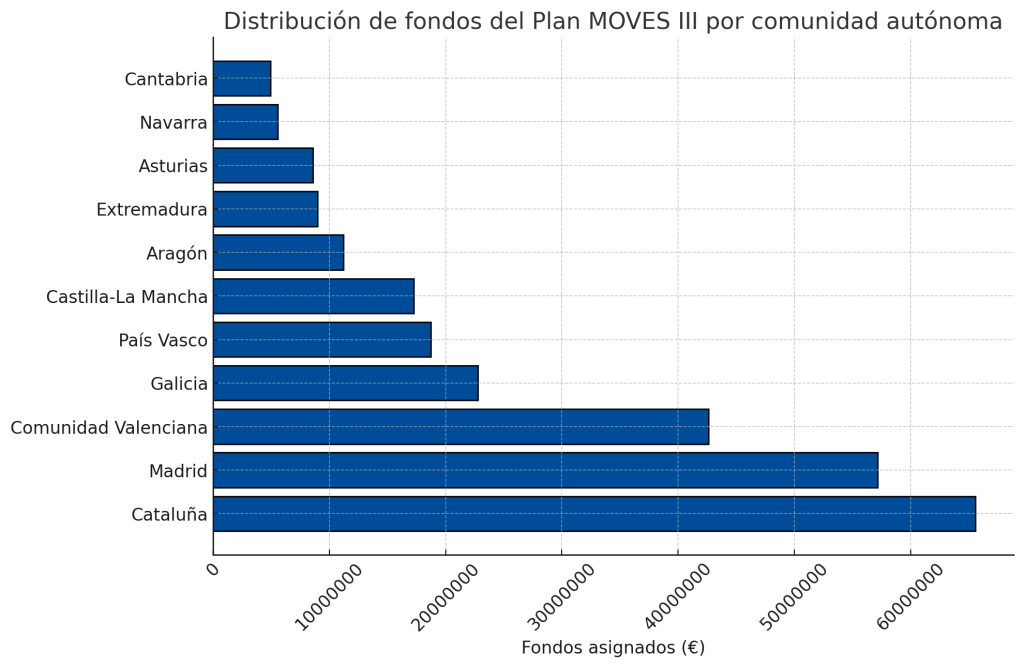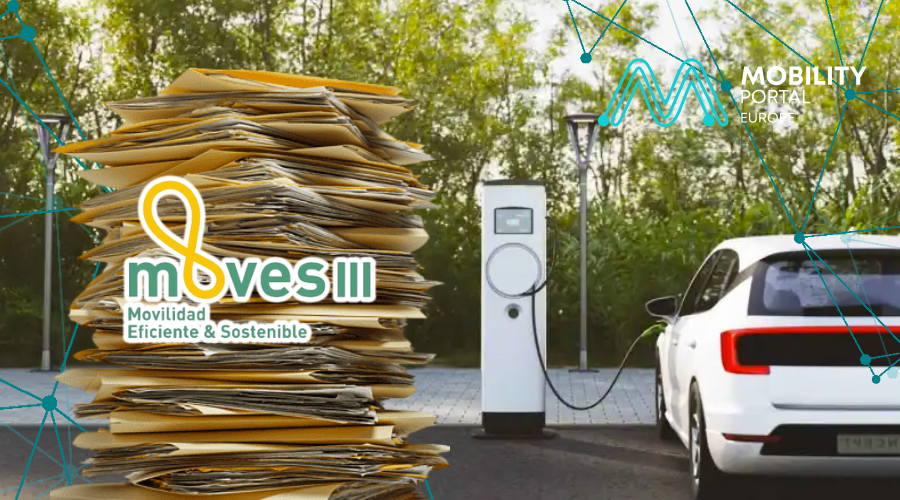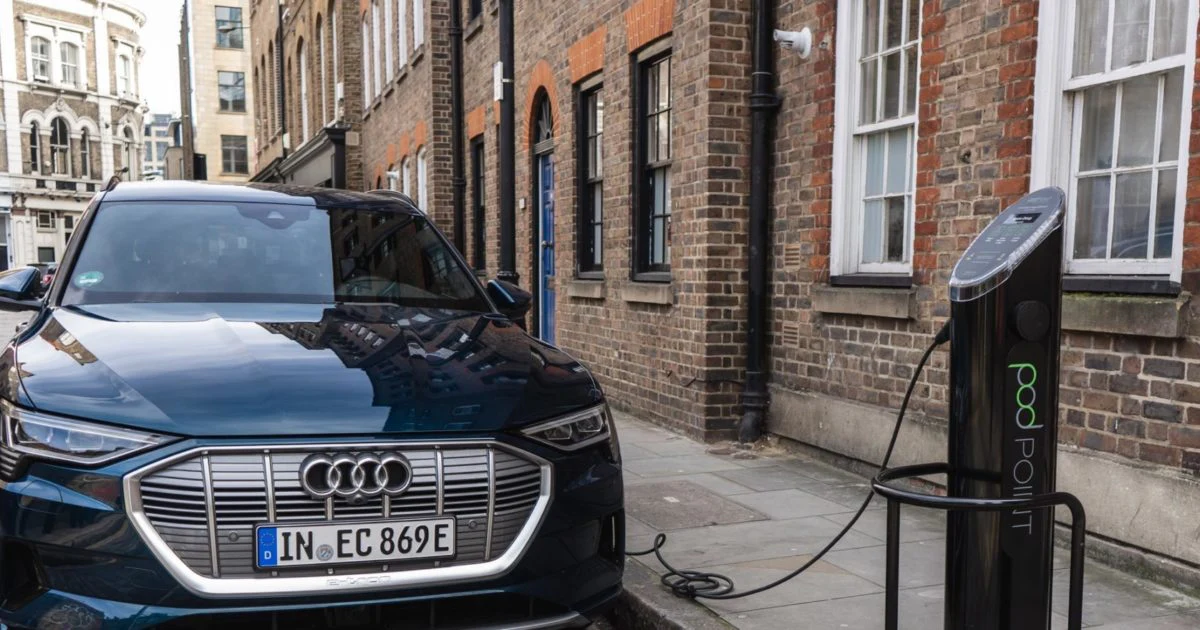With over 263 million euros already allocated to eleven autonomous communities, the MOVES III 2025 Plan remains largely inactive across much of Spain.
The extension of the scheme was officially announced on 1 April via Royal Decree-Law 3/2025, which prolonged the programme’s validity until December and allowed applications to be submitted retroactively from 1 January.
What progress has been made in the past two months?

Only a few regions have taken concrete steps to enable the application process.
Meanwhile, businesses and private users face a challenge that is slowing down the entire electromobility ecosystem—and Mobility Portal España has gathered their experiences.
Adrien Castagnié, Managing Director of ChargeGuru Iberia, sums up the situation with a stark image: “We have a stack of applications sorted in order, but we can’t initiate them. The day the system is reactivated, we’ll have a mountain of administrative work piled up.”
The problem, as he explains, is technical—but with real consequences.
“When we log onto the platforms of various regions—Andalusia, Galicia—the button to submit a new application doesn’t work. We can’t begin anything. All we can do is prepare documents with clients and wait,” he says.
The greatest concern is that, once the portals finally go live, the allocated funds will be depleted rapidly, leaving many applicants out:
“We don’t want just a few days between the actual reactivation and the exhaustion of funds. There are clients we told we could manage their MOVES applications, and if we can’t due to lack of capacity, they’ll be disappointed—and rightly so,” he adds.
Madrid and Andalusia: Positive signs amid MOVES paralysis
The Community of Madrid is among the first regions to officially activate the new phase of the MOVES III 2025 Plan.
The Energy Foundation (Fenercom) has published the call for applications, with a total budget of 54.5 million euros—43.6 million euros earmarked for electric vehicle (EV) purchases and 10.9 million euros for charging infrastructure installation.
The procedure will be carried out online, allowing both individual users and authorised representatives to submit applications.
The resolution highlights efforts to speed up approval times and avoid the delays that have drawn criticism in the past.
In Andalusia, the regional government has confirmed that the application process is underway and expected to open before 3 July, within the legal three-month window from the publication of the Royal Decree.
Retroactivity will also be respected.
In Asturias, however, the situation remains at a standstill.
According to industry association Aedive, these delays are not limited to the Principality, but are occurring in various autonomous communities, directly impacting installation companies and infrastructure providers.
ChargeGuru confirms this: “We’ve already completed installations for companies—fully legal and operational—but we haven’t been able to submit applications because the platforms won’t allow it. We need official confirmation that those installations will be eligible for MOVES.”
They also highlight excessive documentation requirements that make the process even more difficult:
“Many customers pay by bank card, but the regional authorities require proof of payment that is hard to provide with that method. We submit bank statements showing the payment, but they aren’t accepted. These requirements need to be more flexible.”
According to their data, 70% of ChargeGuru users pay by card through the customer portal.
A critical view from the sector: “Instead of driving change, MOVES is holding it back”
Ricard Puiggrós, an electric mobility expert, shares this view—and goes further.
“Many companies made investments based on the information they were given. Now they’re in limbo. They don’t know if they’ll be able to recover part of that investment, and they feel misled.”
In his view, the MOVES Plan is far from being an efficient tool: “Rather than driving change, it’s holding it back. It arrives late—or not at all—and it causes frustration among users.”
It’s worth remembering that the aid process has historically faced delays ranging from six to eighteen months.
And that’s not all.
“This distorts the market: car brands don’t lower prices because they know subsidies exist. And it’s not inclusive, because not everyone can afford to front the money,” Puiggrós adds.
He proposes abandoning direct purchase subsidies and replacing them with structural measures: tax incentives, free parking, reduced tolls, and above all, a well-distributed and accessible charging network.
How much MOVES funding is at stake?
According to the Institute for Energy Diversification and Saving (IDAE), more than 263 million euros has been approved for eleven regions in this new phase of MOVES III.
The goal is to reinforce existing measures and ensure their continuity through 31 December 2025, following the repeal of the Omnibus Law, which had created a legal vacuum at the start of the year.
Regional breakdown:

- Catalonia: 65.5 million euros
- Madrid: 57.1 million euros
- Valencian Community: 42.6 million euros
- Galicia: 22.7 million euros
- Basque Country: 18.7 million euros
- Castilla-La Mancha: 17.2 million euros
- Aragón: 11.2 million euros
- Extremadura: 8.9 million euros
- Asturias: 8.5 million euros
- Navarra: 5.5 million euros
- Cantabria: 4.9 million euros
These funds will subsidise both the purchase of electric vehicles and the installation of charging points, with additional benefits for municipalities with fewer than 5,000 inhabitants and individuals with reduced mobility.
READ MORE
-
EVS38: E-mobility leaders to meet next week to discuss the future
From 15 to 18 June, industry leaders, researchers, and policymakers will gather in Sweden. The event is expected to welcome over 11,000 visitors. Why is EVS38 a must-attend event for E-Mobility companies?
-
Eric Stempin: “We want to make it clear that EVBox has a long-term vision”
EVBox is ushering in a new era as it advances its expansion into eMobility markets such as the United Kingdom and Spain. In this context, the French company’s CEO shares an exclusive look at their long-term vision and commitment to deploying high-power infrastructure across Europe.
-
EDF Energy snaps up Pod Point for just £10.6 million
EDF currently holds approximately 53% of Pod Point’s issued share capital. The announcement comes after a long, painful period of financial difficulties for Pod Point.











